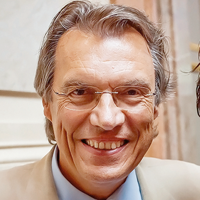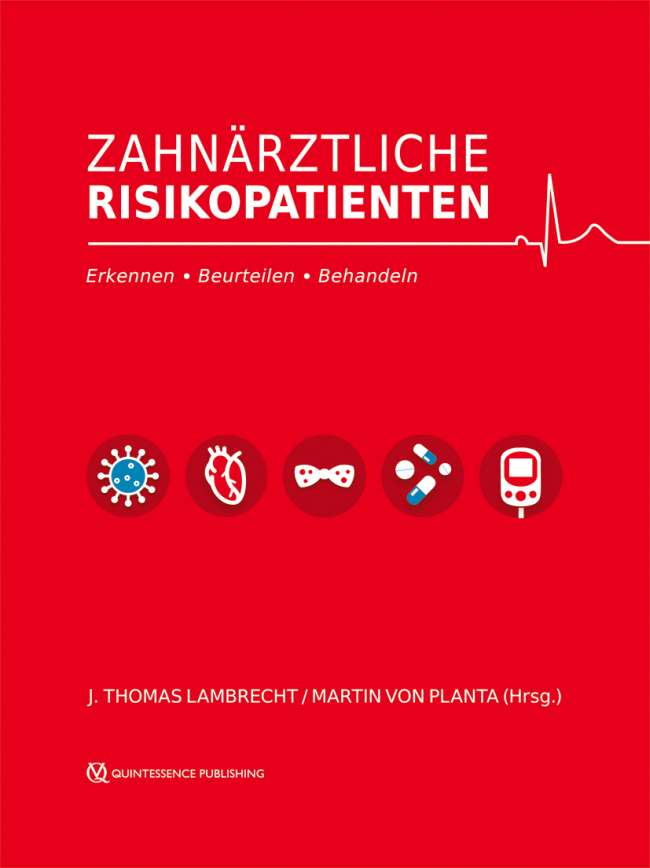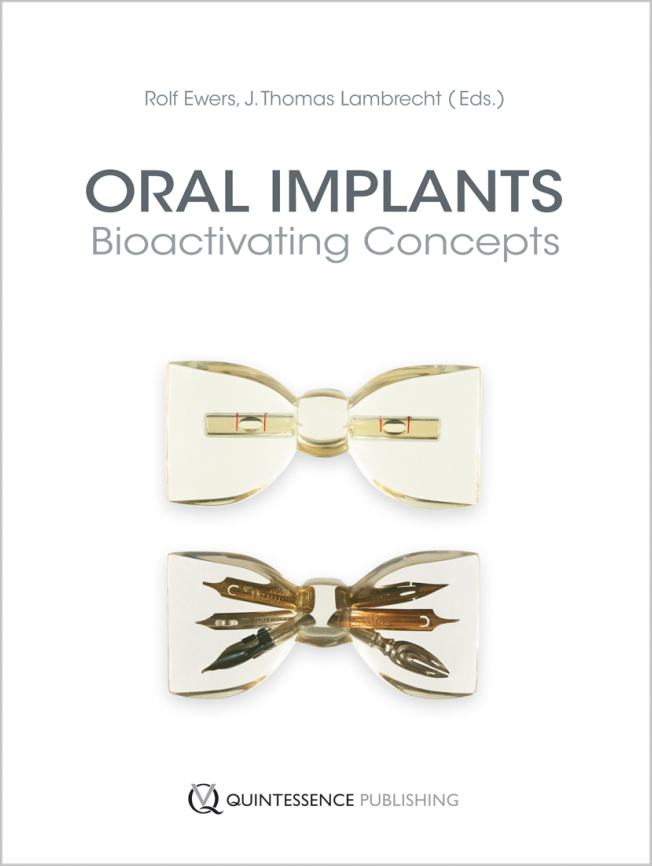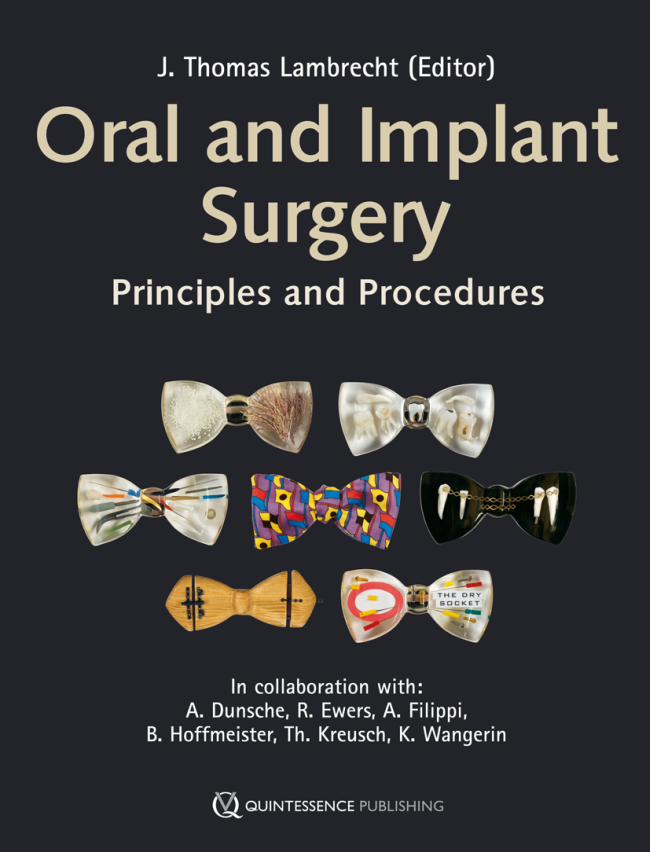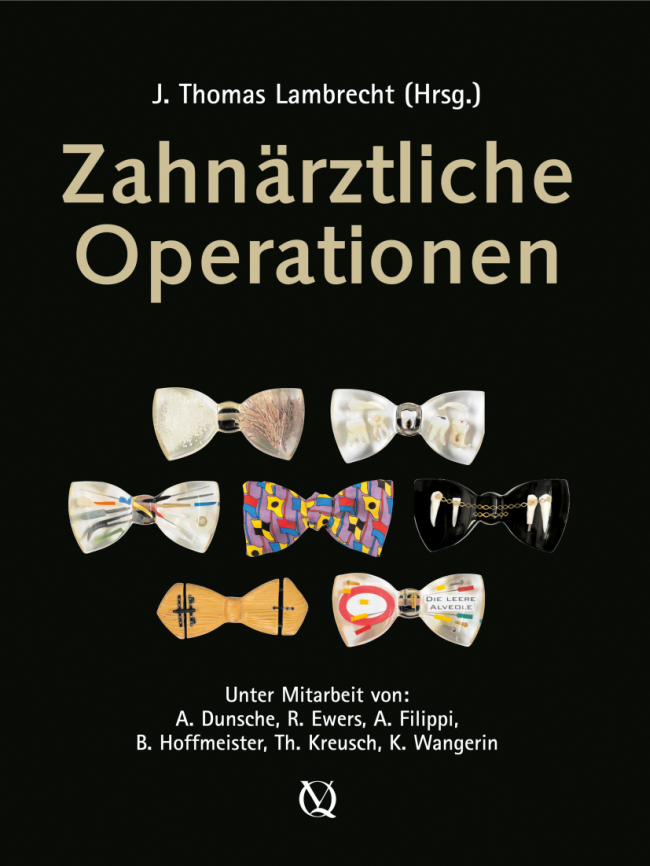Team-Journal, 9/2018
Pages 455-459, Language: GermanHolzgreve, Brigitte / Lambrecht, J. ThomasDie Schwangerschaft ist keine Krankheit, sondern ein variierter normaler physiologischer Status mit Risiken. Zahnärztin und Zahnarzt wie auch Ärztin und Arzt haben die Pflicht und das Recht, auf allgemeine Gesundheitsrisiken wie Alkohol, Nikotin und Übergewicht hinzuweisen. Gleichzeitig erfordert die psychische und physische Führung bei der zahnärztlichen Behandlung spezielle Rücksichtnahme: Eine - eventuell erforderliche - Prämedikation bei ängstlichen Patientinnen muss in jedem Fall mit der behandelnden Gynäkologin/dem Gynäkologen abgesprochen werden: Tranquillanzien, Anxiolytika und weitere Psychopharmaka sind zum großen Teil plazentagängig, können beim Embryo (1. Trimenon, Abb. 1) bzw. Föten Wirkungen erzeugen und sind in Einzelfällen fraglich teratogen.
Als Faustregel gilt, dass das 2. Trimenon (Abb. 2) die günstigste Phase für eine zahnärztliche Behandlung darstellt, während im ersten Trimenon nur unaufschiebbare Eingriffe vorgenommen werden sollen. Im 3. Trimenon ist zur Vermeidung des Vena-cava-Kompressionssyndroms eine kurzfristige Linksseitenlage in der Horizontalen (Abb. 3) angezeigt, ansonsten die aufrechte Sitzposition.
International Journal of Oral Implantology, 1/2010
PubMed ID (PMID): 20467600Pages 71-74, Language: EnglishLambrecht, J. Thomas / Cardone, E. / Kühl, S.Purpose: To present results of a survey on the status of implantology in Switzerland in 2006.
Materials and methods: A questionnaire was sent to all SSO (Swiss Dental Society) members asking for personal (anonymous) background data and their implantology concepts. Specific questions dealt with level of recognition of implants, use of implants, superstructures, success and failure rates, recall and training.
Results: A total of 1568 (47.3%) of the 3315 questionnaires were returned. Straumann, Nobel Biocare, 3i, SPI and Frialit were the most commonly used implant systems in Switzerland. Almost two-thirds (63.8%) of the dentists placed more than 20 implants per year. Long-term prognosis was the crucial factor, whereas material costs played a minor role. The edentulous mandible was the indication of choice, whereas the edentulous maxilla applied less. Almost every dentist active in implantology followed continuing educations programs in the field.
Conclusions: Compared to a study undertaken 12 years ago, the number of dentists engaged in implantology doubled, meaning at least one-third of non-hospital dentists in Switzerland were involved in dental implantology. Overall, willingness to extend the therapeutic range has greatly increased.
Keywords: implantology, status report, Switzerland
Quintessence International, 8/2007
PubMed ID (PMID): 17823688Pages 689-697, Language: EnglishLambrecht, J. ThomasAntibiotics are used for prophylactic and therapeutic purposes. Since bacterial resistances constantly change the existing conditions, the patient's therapy needs to be monitored periodically and adjusted to the changed conditions. Clinicians should be very careful about prescribing antibiotics for prophylactic purposes. But with regard to risk patients - especially when there is a risk of endocarditis - antibiotic prophylaxis is essential. Antibiotic therapy is absolutely necessary as a supporting treatment for primary surgery if the patient has acute osteomyelitis, transmitted abscesses, or multiple space abscesses. It might also become necessary to refer the patient to an appropriately equipped center or clinic.
Keywords: antibiotic prophylaxis, antibiotics, odontogenous infection, oral surgery
Quintessence International, 2/2007
PubMed ID (PMID): 17263150Pages 111-119, Language: EnglishLambrecht, J. Thomas / Hodel, YvonneObjective: To collect, retrospectively, long-term results from patients who received immediately loaded Straumann implants with bar-retained overdentures.
Method and Materials: The surgical and prosthetic treatment took place between 1981 and 1991 at the Department of Oral Surgery, Oral Radiology, and Oral Medicine, University of Basel. In each case on the day of the operation, the patients were fitted with a bar that was immediately loaded with a hybrid prosthesis. Patients who were available at the time of this study were clinically reexamined and statistically assessed.
Results: Among the 44 patients who received 176 interforaminal Straumann implants (4 implants per patient), follow-up was possible in 23 patients, who had received a total of 89 implants. The mean observation time for the implants was 12.2 years (8 to 18 years). Three implants were lost. Five implants did not meet the predetermined success criteria. Using the definition by Cutler and Ederer, the probability of success was 83.3%.
Conclusions: The results show that the requisite 4-month healing time for immediately loaded interforaminal Straumann implants with bars does not have to be observed.
Keywords: immediate bar, immediate loading, implants, long-term results, overdenture
Quintessence International, 10/2007
PubMed ID (PMID): 18197326Pages 859-866, Language: EnglishLambrecht, J. Thomas / Linder, Manuela / Ostojic, SinisaRehabilitation of the chewing function of a patient depends on the quality and volume of the existing jawbone. Vertical augmentation of the jawbone is often a challenge for the dental surgeon. Various transplantation methods, from transplantation of autogenous bone to use of bone substitute material, have been described and discussed and are often controversial. Vertical distraction presents an alternative to preimplantation augmentation of vertically reduced bone. The technique offers certain advantages over conventional augmentative methods.
Keywords: alveolar process, distraction, implants, osteogenesis, vertical bone deficiency
The International Journal of Oral & Maxillofacial Implants, 6/2003
Pages 826-834, Language: EnglishLambrecht, J. Thomas / Filippi, Andreas / Künzel, André Rätzer / Schiel, Harald J.Purpose: Submerged and nonsubmerged ITI solid-screw titanium implants were followed retrospectively from 1989 to 1993 and prospectively from 1994 on to analyze long-term prognosis in partially and fully edentulous patients. Material and Methods: A total of 468 implants were consecutively inserted in 191 patients from 1989 to 1998. Two hundred twenty-eight successfully integrated fixedrestoration implants and 238 with removable restorations were restored following a healing period of 4 to 6 months (9 months in sinus floor elevation sites). From 1994 on all implants inserted were documented annually up to 9 years. During examination the clinical status of the implants was analyzed and evaluated according to predefined criteria of success and this allowed the calculation of 10-year cumulative survival and success rates for 468 implants.
Results: Two implants (0.43%) did not successfully integrate during the healing period, and 8 implants (1.7%) were classified as failures during follow-up (1 late failure under load, 7 with a progressive bone loss from 1 to 3 threads). Including 68 implants in subjects who dropped out (with a dropout rate of 14.4%), the 10-year cumulative survival and success rates were 99.2% and 96.4%, respectively.
Discussion: Over the course of this long-term study, osseointegrated implants, once used as a last possible solution, became nearly standard in cases of single-tooth implants because of the high rate of long-term success. Life table analysis not only determines whether an implant is functioning, it also makes a statement about its clinical status according to strict success criteria.
Conclusion: The study demonstrated that ITI solid-screw titanium implants achieved success rates above 95% in a clinical center for an observation period of up to 10 years. (More than 50 references)



